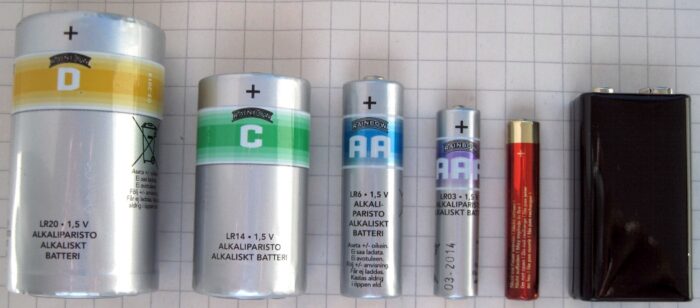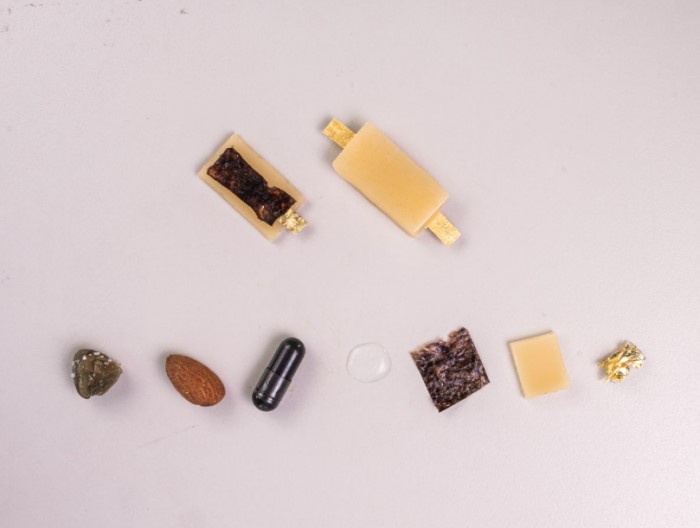Most of the time, eating a battery is the surest way to earn a trip to emergency at your local hospital (please don't eat batteries!).
This is because batteries contain a whole lot of hazardous chemicals that our bodies certainly do not agree with. That is also why we don't throw batteries into the garbage along with normal household waste.
Battery may equal energy, but they're certainly not healthy.
But a new invention from engineers at the Italian Institute of Technology in Milan, Italy, might turn this thinking on its head. These researchers have made a fully rechargeable battery that you can eat.
Yes, it is made of food!
Storing energy

Common batteries, like these alkaline batteries, are an incredible innovation, but contain hazardous chemicals. (Wikimedia Commons)
Maybe this shouldn't be all that surprising? After all, food is literally a source of energy for all living things. Why couldn't it be used to make a battery?
In this case, the battery is made of almond, nori (dried seaweed), charcoal, beeswax, and edible gold leaf (ooooh, fancy!). Though it sounds kind of tasty, it is not exactly powerful. In fact, the amount of energy that it can deliver is downright tiny.
The edible battery provides about 48 microamperes for just 12 minutes. By comparison, a standard AA battery delivers 1000 milliamps (one million microamps) for 100 hours.
But while this invention (or is it recipe?) is not about to replace conventional batteries any time soon, it may fit the bill to power a new frontier of medical science.
We're talking about tiny electronic devices that monitor our health from inside the body!
How is it going in there?
Engineers are getting closer and closer to perfecting nanobots—super-tiny robots that we could ingest (eat) to examine issues inside our organs. And these robots are not the metal machines that usually come to mind when you hear the word 'robot'. Instead, new innovations have created machines built from soft, supple parts that are far less invasive inside a living organism.
Such as, you know, humans. Neat!
It's quite amazing to think of. But one of the biggest obstacles to using these nanomachines inside humans was how you powered something like that. After all, if a battery is poisonous, that sort of rules it out as a power supply, doesn't it?
But what if the battery itself was edible? Well, ultimately, we could just digest it and move on with our day. Brilliant!
Delicious future
And the people behind this battery are thinking about more than just powering medical nanobots, too.
Yes, this current edible battery is very weak. But it is only a prototype. What if science could find a way to improve it? Maybe they could even one day make an edible battery that rivaled our most powerful battery technology, such as Lithium-ion batteries. And it would certainly be better as a power source for toys for young children, where there is a high risk of ingestion (eating).
In a press release, one of the study's co-authors, Ivan Ilic had this to say: "While our edible batteries won't power electric cars, they are proof that batteries can be made from safer materials than current Li-ion batteries. We believe they will inspire other scientists to build safer batteries for a truly sustainable future."
That is news that really gets our motor running!
 The new battery and the food used to make it! (Italian Institute of Technology)
The new battery and the food used to make it! (Italian Institute of Technology)









